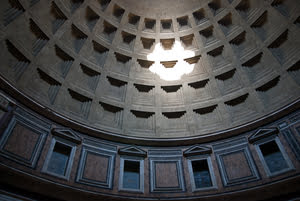The stories and facts of ancient Italy are not as well-known to the modern world as those concerning ancient Greece and certain other countries. However, if you visit Italy and dedicate some time to exploring the country outside major cities, you will find plenty of historical sites and artifacts to help you better appreciate Italy’s origins.
1- In ancient Italy, the Roman gods and goddesses played as large a role as they did in Greece.
Visit the Valley of the Temples, for example, in Agrigento, Italy, where numerous temples, tombs, and altars still stand in service of those deities. Some have been severely eroded by time and weather, while others were restored during conversions to Christian churches in ancient Italy.
2- Rome was established in 753 BC.
Several stories exist about the origins of Rome, the most popular of which sites Romulus and Remus, sons of the God of War, as the founders. Rome was ruled by kings in ancient Italy, after which a Republic was formed to prevent too strong a concentration of power in any one person’s hands. The Italians celebrate the founding of Rome every year on April 21, using many of the same methods with which Americans celebrate Independence Day.
3- The early inhabitants of ancient Italy were widely varied.
Many countries are founded upon homogenous origins, but this is not the case with ancient Italy. Five races or classes of people colonized Italy in its beginnings, including several groups of Greeks. Each subset of residents possessed its own unique language and culture, some of which still pervades modern Italy.
4- Engagement rings originated in ancient Italy.
The ancient Romans observed the tradition of engagement rings just as we do today, though for different reasons. A ring represented a marital contract between bride and groom, and symbolized the transfer of a woman from her father to her husband-to-be. Those rings were not made of gold, silver, or titanium, however, but of iron, and lacked ornamentation.
5- The Pantheon dome still stands.
It is the “largest (43.4m dia.) unreinforced solid concrete dome in the world,” and has been in continuous use since its creation nearly 2,000 years ago. People from all over the world still flock to the Pantheon, which was erected as a temple to the Roman Gods in ancient Italy.
6- Farming is a long-held tradition in Italy.
Even in ancient Italy, one of the primary focuses for inhabitants was farming, both along the coast as well as inland. Grapes, for example, been grown in Italy since ancient Rome, and wine is now a well-known export of the country. You can visit Italian vineyards and wineries that have existed for centuries.
7- Architecture from ancient Italy still survives today.
It is impossible to tour Italy without noting the amazing architecture, some of which dates back to the first century A.D. The columns, arches, and stone work originating in ancient Italy continues to influence modern architecture, and many architectural details and constructs attributed to the Middle Ages can actually be dated to ancient Italy.
8- Clothing indicated social class in ancient Italy.
Different classes of people wore different colors of clothing in the Roman era, and more clothes indicated higher status. The thicker the soles of the shoes, for example, the more wealthy the person was seen to be. Upper-class Romans also wore cloaks and tunics made of more layers of fabric than their lower-class counterparts, and they often added wigs to their hair to increase the thickness. This is depicted in many of the artworks from this time period in Italy’s museums.
9- Divination was popular in ancient Italy.
Etruscians (early inhabitants of ancient Italy) practiced divination, specifically Alectryomancy, which is the use of animals to divine future events. This is considered an early form of modern divination methods, such as the use of crystals, tea leaves, and tarot cards.
10- Education was important to the ancient Romans.
Schools were formed even in ancient Italy for the purpose of educating children, and the ancient Romans are considered heavy influences on modern education. Roman numerals, the Roman alphabet, and other basics were founded then, and numerous languages were developed based upon the Latin dialect used in ancient Italy.


